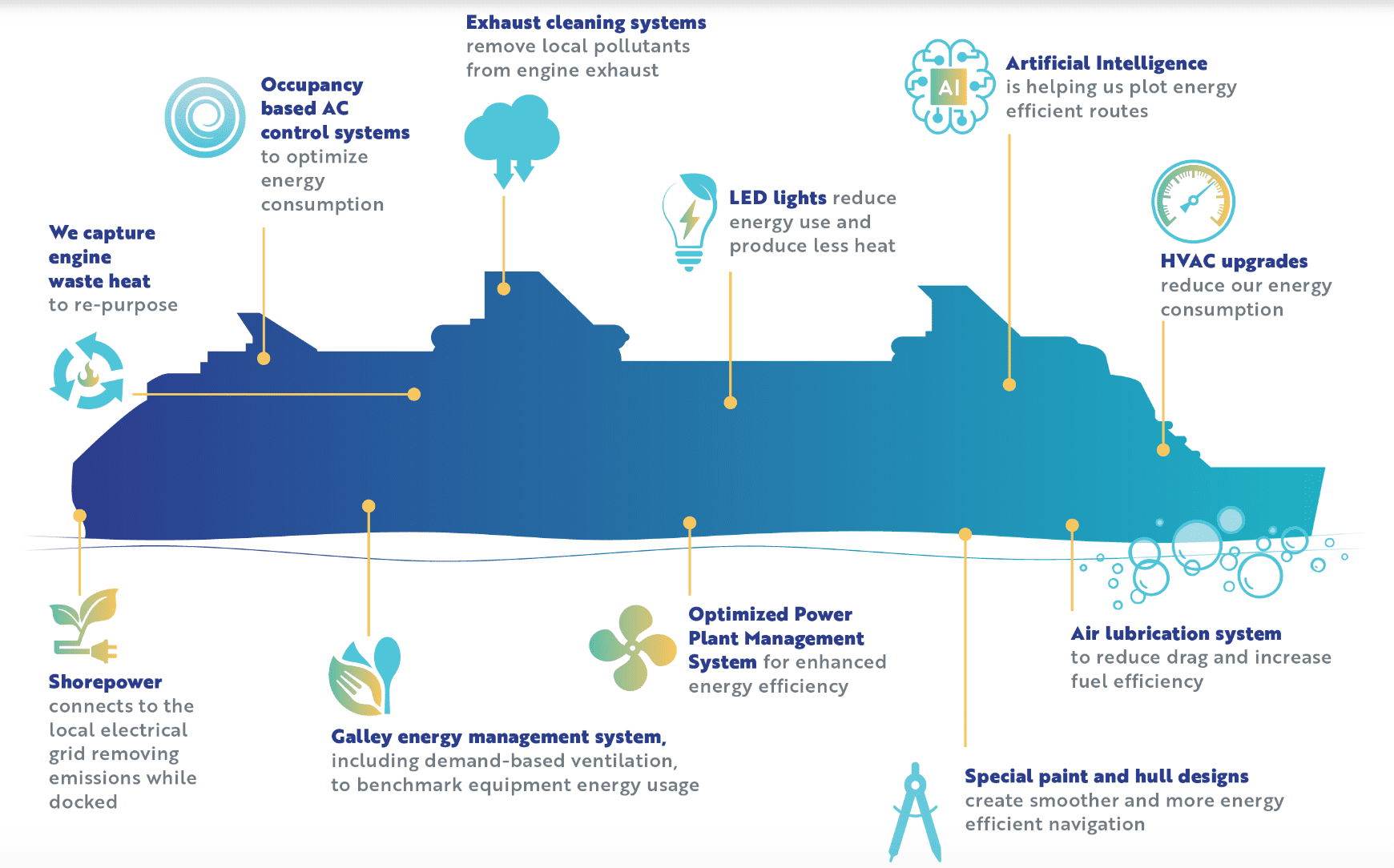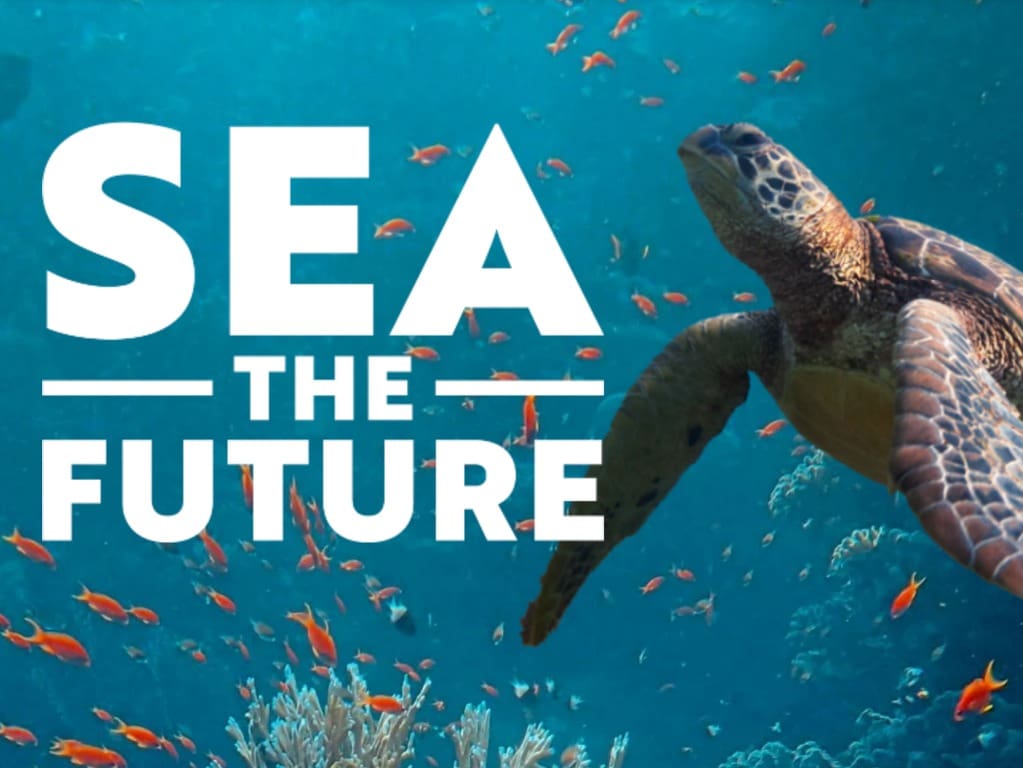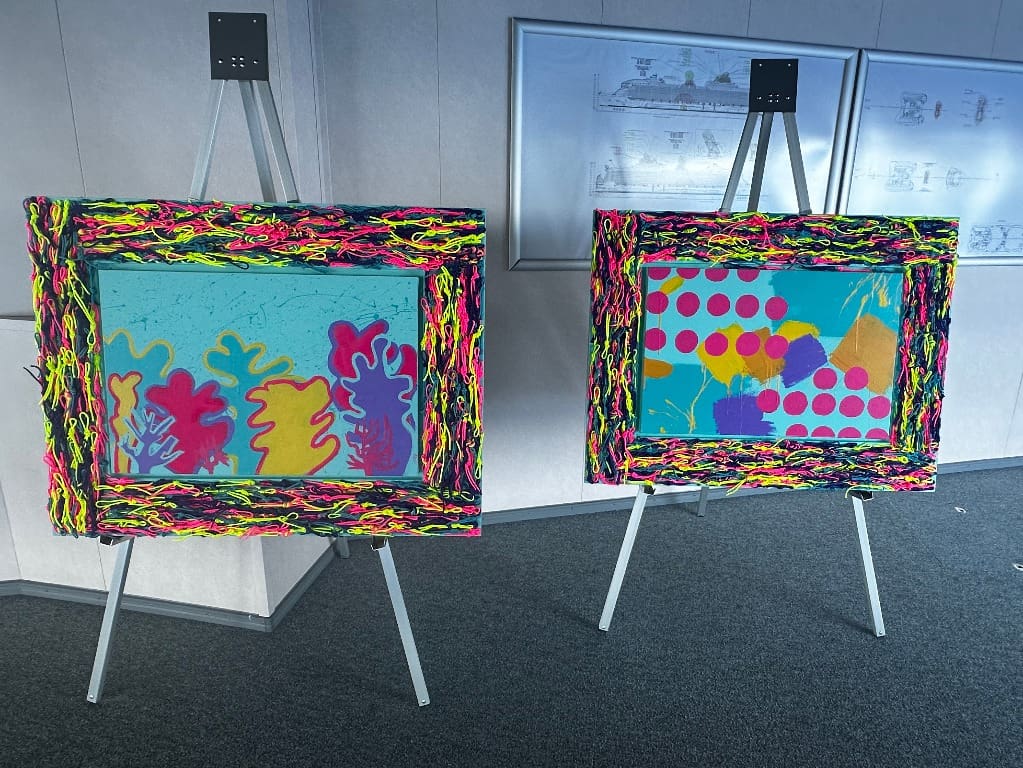Royal Caribbean looks ahead with SEA the Future
ANN RUPPENSTEIN
During the launch of Utopia of the Seas, Royal Caribbean’s Nick Rose pointed out that the ship is designed to be 30 per cent more efficient than what is required by law today.
“When you look at how we’re doing that, obviously, the first one is changing fuels. This ship is a dual fuel ship, meaning it’s both a gas ship and a liquid oil ship — it can do both,” explains Rose, the head of ESG for Royal Caribbean Group. “It’s also fitted with shore power so when we do call on a port with shore power, we can use that.”
However, while new cruise ships are developing ships with shore power capabilities, he says there’s still a significant lack of shore power available in port in destinations around the world.
“A lot of people may not know we go to over a thousand ports in any given year and only 31 of them have shore power,” he says. “It’s growing — there’s a regulation in Europe for many ports to provide it so it’s not just us having the ability to use it but it’s also the ports being able to provide it.”

Royal Caribbean Group’s sustainability initiative is called SEA the future with the SEA standing for [S]ustaining our planet; [E]nergizing communities and [A]ccelerating innovation. These initiatives — energy, water and waste — fall under sustaining our planet.
“The other thing is this ship was designed to be fuel cell ready so not only using different fuels to convert energy but using different types of systems to convert energy,” he adds.
When it comes to water, he says Royal Caribbean International ships are equipped with advanced purification treatment systems.
“We make all of our water,” he says. “And then once the water is used and consumed we actually treat it on the way out using tertiary treatment systems that are better than most land-based systems.”

Notably, Royal Caribbean Group is working towards net-zero emissions by 2050.
When it comes to E — energizing communities — it’s not only in the destinations visited but also among the community of nearly 60,000 Royal Caribbean staff.
For example, the First Officer of Utopia of the Seas is a graduate of The Bahamas Maritime Cadet Corps, an afterschool program Royal supports for high school aged students to gain exposure to the maritime industry and work towards a career at sea.
“We also run scholarships for graduates to the Caribbean Maritime University giving them an opportunity to finish a higher degree and then come onto our ship for sea time,” says Helen O’Connell, AVP, community engagement, for Royal Caribbean Group.
O’Connell says they also fund local small businesses to become vendors for the cruise line from jet ski operators for day tours to hot sauce creators where the product is now being used as part of their supply chain. She says it’s also equally important to showcase the culture of the destinations they visit, especially in the Caribbean.

On the crew side, for Utopia of the Seas, they brought on an artist from The Bahamas to design artwork that isn’t guest facing but solely for the crew, including pieces created using 2,700 pieces of string that members of the crew tied to be part of the project.
“We look at our community internally as well as externally,” she says.
As for accelerating innovation, it’s all about sustainable ship design and utilizing cutting-edge technologies for growth. One example is OceanScope, a partnership with the Rosenstiel School of Marine, Atmospheric, and Earth Science, that provides real-time data on atmospheric and ocean conditions from Royal Caribbean’s ships to scientists. NASA also uses the data to ensure calibrate their satellites, and the National Oceanic and Atmospheric Administration uses it for hurricane modelling.

















